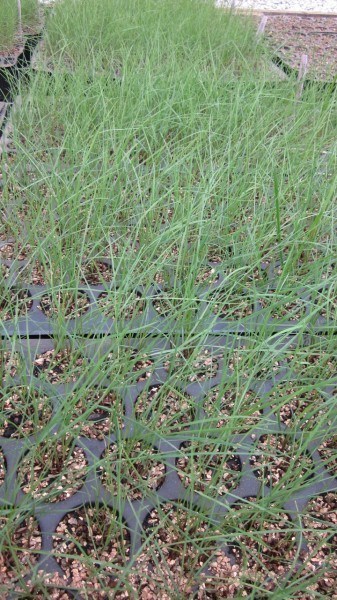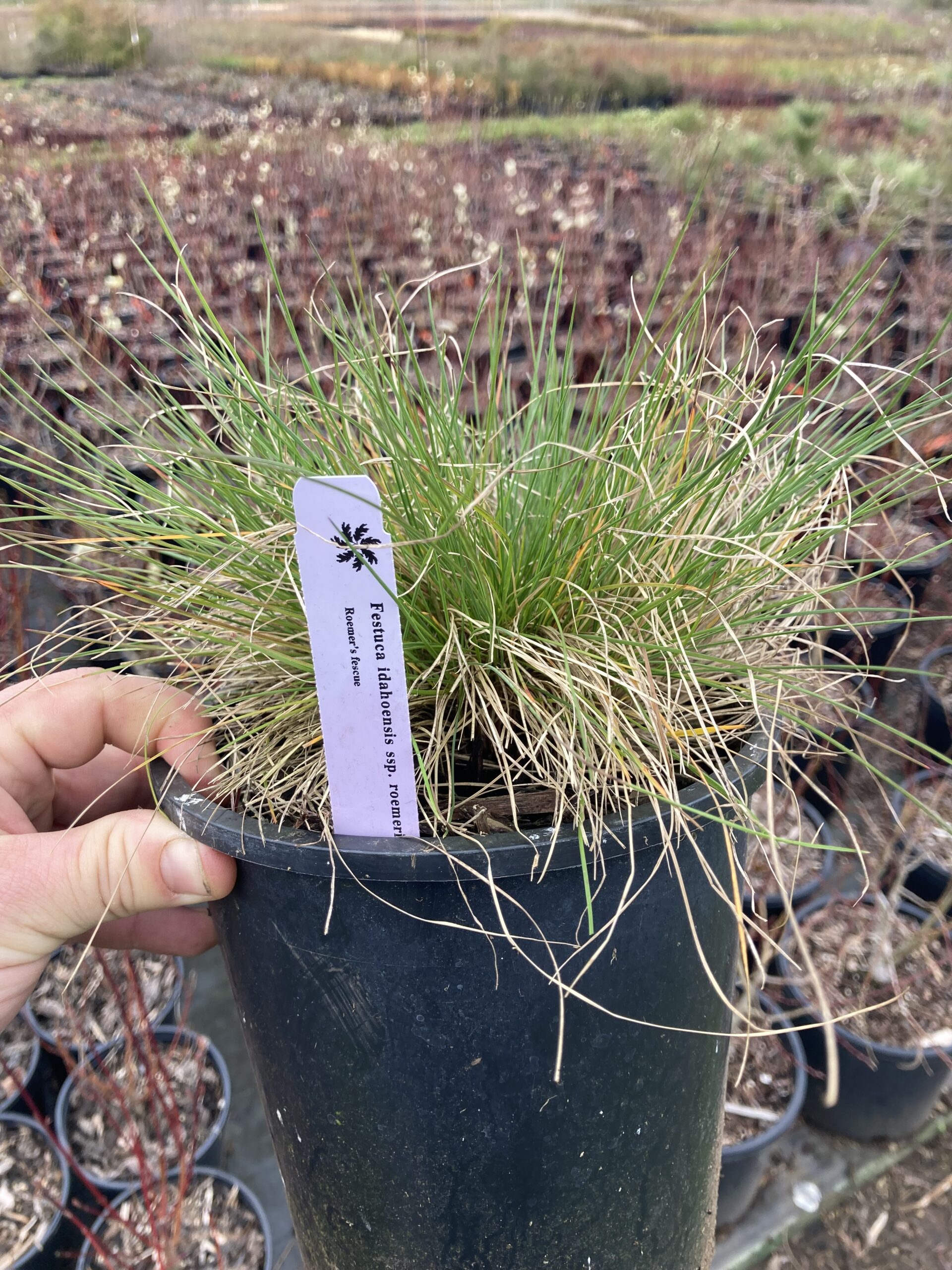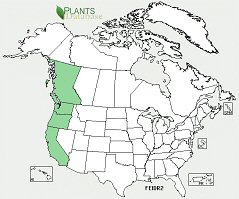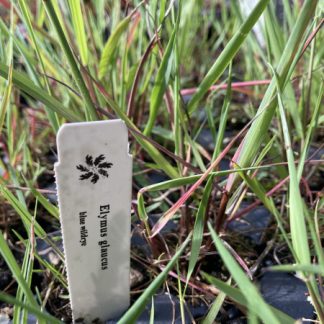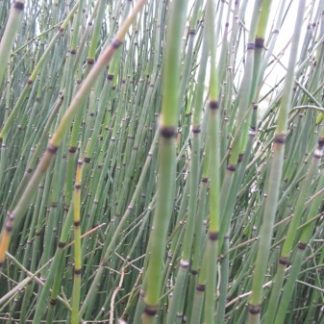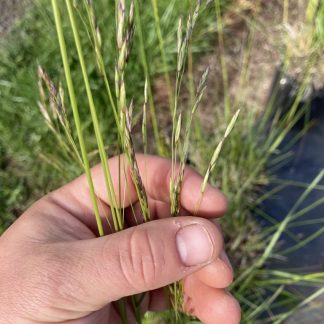Festuca idahoensis ssp. roemeri
Roemer’s fescue
Habit: a densely tufted cool season bunch grass with a bluish gray green color. Leaves are basal and grow from 3-7 in (7-18 cm) long, very finely textured and sometimes covered with a waxy whitish coating. Panicle (seed head) is more open than that of the Idaho fescue; the stem can vary in color from green to purple to red.
Ecology: with a more limited habitat than its close relative Idaho fescue, Roemer’s fescue occurs only west of the Cascades from Southern British Columbia south to Northern California, found in dry habitats such as rangeland prairies, and moist upland sites. Elevation is from sea level to approximately 2500 ft (762 m).
Growing Conditions: full sun to partial shade, prefers medium to fine textured soil. Generally located on dry to very dry sites. Most often found on soils that are very shallow to bedrock. Non-aggressive when planted near other perennial plants.
Roemer’s fescue is an important native grass for restoration of upland prairie and oak savanna within its natural range of Western Oregon, Western Washington, and Northwest California. While uncommon or even rare due to habitat loss, it is still dominant in some remnant prairies.
Specs
Perennial Grass
14-39 in (35-100 cm)

